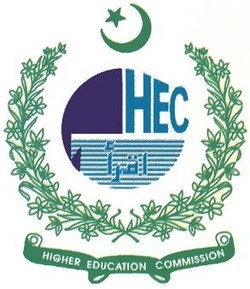Impact of Mediated Dress Culture on Islamic and Social Practices of People
DOI:
https://doi.org/10.53762/alqamar.03.02.e10Keywords:
Islam and Social Culture, Dress, West, Media, PakistanAbstract
Pakistan is an Islamic country where people from all occupations follow the preaching’s of Islam. This study, "Impact of mediated dress culture on Islamic and social practices of people,” investigates that dressing presented in Pakistani dramas influences Islamic civilization and culture, promotes Western dress and western dress culture, and cause Islamic and social problems within a society. The researchers use the purposive sampling technique and collect data from 240 male and female respondents under cultivation theory. The researchers use the quantitative method, collect data through survey, The study's demographic findings reveal that most unmarried female student respondent’s aged18-30 participated in the survey. Findings show that Pakistani TV dramas promote Western dressing culture, which is against the preaching’s of Islam. The majority of the respondents believe that Pakistani TV drama is not reflecting the Islamic civilization, culture, and dressing patterns shown in Pakistani TV drama are a hurdle to perform Islamic and religious worship. Pakistani TV drama strongly influences Pakistani people's Islamic and social practices due to Western dressing, lifestyle, luxurious life, and Hindu religious activities.
References
References
Al-Din, I. M. (2011). Lisan Al-Arab. Beirut: Dar Sader.
Ali, A., Hassan, S. A., & Khalid, A. (2015). The impcat of indian dramas on language and dressing of females. Journal of Humanities and social sciences, 9 (1), 66-71.
Gerbner, G., Gross, L., Morgan, M., Signorielli, N., & Shanahan, J. (1994). Growing up with Television: The Cultivation Process. NJ: Mahwah.
Isfahani, I. R. (2015). Mufradat Ul Quran. Lahore: Islami Academi.
Ju, H. (2019). Korean TV drama viewership on Netflix: Transcultural affection, romance, and identities. Journal of International and Intercultural Communication, 13 (1).
Karim, L. N., & Shehzad, M. (2016). Effects of Romantic Scenes in Pakistani Dramas on the Youth of Pakistan (A case study of Gujrat University Students). INternational Journal of Interdisciplinary and Multidisciplinary Studies, 2 (8), 42-49.
Magsadia, A., & Vargas, D. (2021). INFLUENCE OF CULTURAL TRANSMISSION THROUGH TELEVISION ON CHILDRENS BEHAVIOR. SSRN .
Mcquail, D., & Windahl, S. (1994). Communication Models for the Study of Mass Communications. Routledge.
Muslim, I., Sarwar, M. S., & Bajwa, A. M. (2020). Endorsement of Diverse Cultures in Less Developed Areas: A Study to Understand the Effects of Cable Television in Southern Punjab. Pakistan Social Sciences Review, 4 (3), 711-720.
Obong, U. (2019). Television and Nigerian Cultural Values: The Symbiosis and Social Impacts. Equatorial Journal of Communication Technology, 2 (1).
Rahmani, I. (1975). Urdu Drama Ki Tareekh-O-Tanqeed. Aligarh: Educational Book House.
Safdar, G., & Khan, A. W. (2020). Digital Media Use and Religious, Moral and Cultural Effects on Female University Students of Punjab, Pakistan. Ulūm-e-Islāmia, 27 (1).
Shehzad, M., Shah, S. M., & Arshad, M. L. (2020). Cultivating Fake Cultural Consciousness among People of Pakistan: A Myth or Reality. Journal of Peace, Development and Communication, 4 (2), 165-185.
Signorielli, N., & Morgan, M. (1990). Cultivation Analysis: New Directions in Media Effects Research. Newbury Park, Calif: Sage Publications.
Zadeh, E. G., & Mozafferi, A. (2014). The Impact of Satellite TV Channels on Lifestyle Changes for Women in Iran. International Journal of Business and Social Science, 5 (3).
Zaharopoulos, T. (2001). Traditional Family Relationships and Television Viewing in Greece. Arab Media & Society, 6.
Published
How to Cite
Issue
Section
Copyright (c) 2020 Al-Qamar

This work is licensed under a Creative Commons Attribution 4.0 International License.


















